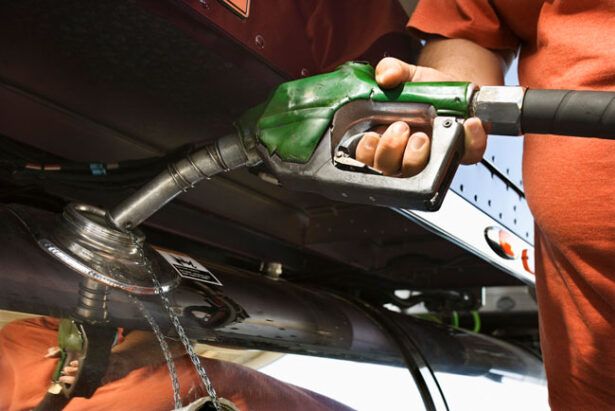
Fleet management is a crucial aspect of many businesses. Companies that use fleet vehicles to transport goods or provide services have many things to consider — vehicles need to be well-maintained, drivers must be trained for safety and efficiency, and costs have to be kept under control. Each of these factors impacts cash flow and bottom lines. It’s also important that fleets manage fuel use. Gas and diesel are consistently among the largest line items in a budget, and without effective control, fuel costs can be difficult to manage. Many fleet managers use fleet fuel cards to help with this challenge.
Using purchase limits helps establish clear expectations for drivers and promotes responsible fuel usage.
Fleet cards, or fuel cards, are valuable tools that help fleet managers and business owners manage fuel purchases, monitor driver spending, and adhere to fueling guidelines. Using these alternatives to credit cards can help drivers stay aligned with company policies and promote responsible fuel consumption.
How Fleet Cards Work
A is a payment method designed specifically for businesses that operate vehicle fleets. Similar to a credit or debit card, a fleet fuel card is used by drivers to purchase fuel and other vehicle-related expenses such as parts and services.
A major benefit of fleet cards is how they . When a driver uses a fleet card to purchase fuel, the transaction data is captured in real time. This accurate and up-to-date information is something you can’t get with a traditional credit card. Real-time data combines with several other features, making a fleet card much more than a payment method. When used appropriately, these cards become a business fleet solution.
Top Features of Fleet Cards
The typical fleet card can help a business control fuel expenses, improve operational efficiency, and ensure driver compliance with fueling policies. The following are some of the top features that make fleet cards an invaluable tool for fleet management:
Discounts and Rebates
Perhaps the most well-known benefit of fleet cards is fuel rebates or fuel discounts. The amount you can save on fuel depends on the fuel card. These fuel rebates tend to be higher on fleet cards used in a defined network or with a specific fuel brand. Shell Fleet Cards, for instance, offer savings of up to 6¢ per gallon when used at Shell gas stations. Many cards also provide savings on vehicle parts and services when used at specific vendors. Paying less for fuel and maintenance adds up over time.
Automated Fuel Expense Tracking
Managing fuel expenses manually is time-consuming and prone to errors. With real-time data capture, fleet cards automate the tracking process. This means your drivers don’t need to keep track of receipts or fill out expense reports. And your accounting department doesn’t need to spend time reviewing those additional reports. This reduction in administrative work allows your team to focus on other tasks. Automated fuel expense tracking also ensures businesses have accurate and up-to-date info, making it easier to stay on budget or identify cost-saving opportunities.
Detailed Reporting
Provide businesses with detailed reporting that offers insights into fuel consumption, driver behavior, and overall fleet performance. These reports can be customized to meet the specific needs of the business. Typical reports include:
- Fuel usage by vehicle or driver
- Fuel efficiency by vehicle or driver
- Vehicle usage
- Fueling location analysis
- Tax reports
- Transaction summary reports
Using this information, managers can monitor fuel expenses, identify trends and make adjustments to run a more efficient fleet.
Purchase Controls
In addition to offering discounts and rebates, automating fuel expense tracking, and powerful reporting, fleet cards are equipped with customizable purchase controls. A fleet manager can set limits such as:
- Purchase amount
- Volume of fuel per transaction
- Number of transactions per day, week, or month
- Time of day or day of the week a card is usable
- Fuel type (gas vs. diesel)
- Fuel grade (regular vs. premium)
Using purchase controls can help prevent unauthorized expenses and help ensure drivers are following fueling guidelines.
In addition to offering discounts and rebates, automating fuel expense tracking and powerful reporting, fleet cards are equipped with customizable purchase controls.
The Benefits of Purchase Limits

A common challenge for fleets involves overspending or inappropriate fuel usage. In addition to intentional misuse, there are times when spending guidelines or fuel policies are poorly communicated. Using purchase limits helps establish clear expectations for drivers and promotes responsible fuel usage. Here are a few benefits of implementing purchase limits:
Purchase Limits Set Clear Expectations
Every business operating a fleet of vehicles should have a fuel spending policy. Such a policy outlines expectations for fuel purchases, including fuel type and grade, approved station locations, and any spending limits. When a fleet card’s purchase limits are programmed to align with a company’s fuel policy, drivers know exactly how much they can spend, where they can spend it, when they can use a card, and what fuel is approved for purchase.
Purchase Limits Encourage Responsible Spending
Purchase limits serve as a safeguard against overspending. Without limits, drivers may be tempted to purchase more fuel than necessary, choose premium fuel options, or make unauthorized purchases. Setting limits on fuel spending encourages drivers to be mindful of fuel consumption and make decisions that align with company goals. Responsible spending helps reduce overall and helps ensure that drivers are not engaging in wasteful or inefficient behavior.
Purchase Limits and Reporting Help Track Driver Spending Habits
As mentioned, fleet card reporting is a valuable tool for monitoring drivers. The detailed data allows managers to track individual driver spending patterns and take corrective actions when necessary.
For example, fleet managers can review reports to see if any drivers consistently exceed purchase limits or make unauthorized purchases. If a pattern of overspending is identified, the issue can be addressed with the driver, and if necessary, additional training can be provided.
A Better Way to Prevent Overspending
Fleet cards are a powerful tool for saving on fuel, managing fuel expenses, and ensuring driver compliance with company policies. By implementing purchase limits, businesses can set clear expectations for fuel purchases, encourage drivers to make mindful fueling decisions, and prevent overspending.
Help your business increase cash flow and add to your bottom line with powerful spending limits from Shell.